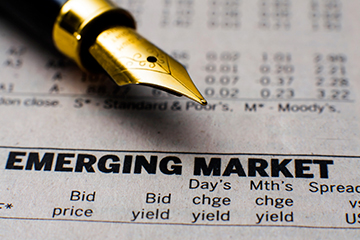With or without the coronavirus: why green investing remains just as relevant as before

Keytrade Bank
keytradebank.be
October 26, 2020
(updated September 06, 2022)
4 minutes to read
From newspaper headlines to Google searches to conversations at the dining room table: the climate was a hot topic before the coronavirus crisis. This is not so much the case anymore. Now in the middle of a pandemic, we are rightly focusing on protecting lives and livelihoods. We also had other major game-changers to worry about in 2020: The US elections, Brexit, trade tensions, Hong Kong and unrest in the US following the murder of George Floyd. Then there's the Belgian government's troubles in forming a cabinet and unrest in the British royal family.
It’s getting hot in here
Although the climate issue has disappeared into the background, this does not mean it is no longer relevant. Despite the fact that we literally slowed down during the lockdown, the global climate continued to suffer in the first half of 2020: from France to Russia and from the Arctic to Mexico. According to several meteorological institutions, 2020 will be one of the hottest years since records began.
Other challenges
Will the coronavirus crisis give climate change some temporary breathing space? Yes.
Can we now sacrifice the economy in order to meet climate targets? No.
Keeping our planet alive and viable requires a huge economic transformation. And not just because climate change has an impact on our health, comfort and safety. It's also because we have to prepare for another other big challenge: by 2050, there will be another 2 billion people on the planet.
Together with rising incomes, this population growth will significantly increase demand for energy, food and (drinking) water, while climate change will have a major impact on the latter two.
Stronger together
The coronavirus crisis has taught us that it is better to prepare ourselves thoroughly before a crisis begins. This is a joint task and a joint responsibility by governments, businesses and citizens.
A huge effort is already being made. For example, for the European Union's EUR 750 billion recovery fund, 30% of all expenditure has to contribute to achieving EU climate targets by 2030. Green bonds – intended for investment in sustainable energy, housing, transport, etc. – are also gaining in popularity. In 2019, new issues totalled USD 257 billion – 51% more than the previous year.
2 birds with 1 stone
As an investor, you can also make a contribution. Eating fewer Argentinean steaks and exchanging your diesel car for an electric bike: you may have become used to hearing such advice by now, no matter how important it is.
However, your investable assets will give you much greater leverage. After all, a huge amount of investment is still required to reverse the climate crisis. According to a study by Morgan Stanley, this amounts to USD 50 trillion in investments.
By investing your money in companies that offer solutions to tackle climate issues, you can kill two birds with one stone. Support companies that are rolling up their sleeves to help and at the same time aim for a potential return.
Which sectors?
Investments in climate solutions can be made in various sectors: energy, materials, agriculture, industry, technology, etc. The investment universe ranges from solar and wind power to batteries, electrification of transport, green buildings, recycling, etc.
Moreover, the efficient use of raw materials and energy is still in its infancy in many sectors. Today, a huge amount of raw materials and therefore money are being wasted due to inefficiencies and losses. An example? In the European Union, 46% of waste is still dumped into landfill. This offers a huge amount of opportunities. Tackling climate change is therefore not only ecological, but also economical.
How?
Investing in climate solutions offers clear growth opportunities. As a private investor, however, it is not always easy to find the right ones. It may therefore be useful to opt for a total solution, such as a passive tracker (ETF) or an actively managed fund.
In the meantime, there are several trackers that replicate a ‘green’ index of companies. This enables you to invest indirectly in dozens of companies using one product to help combat global warming through their business models or products and services.
The disadvantage of a tracker is that it replicates an index: nothing more, nothing less. With an actively managed investment fund, you can invest in a diversified way and the fund manager can also select specifically from the range of companies. On the other hand, you should bear in mind that an actively managed fund is generally more expensive in terms of costs than a tracker.


